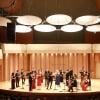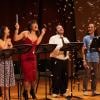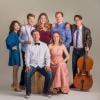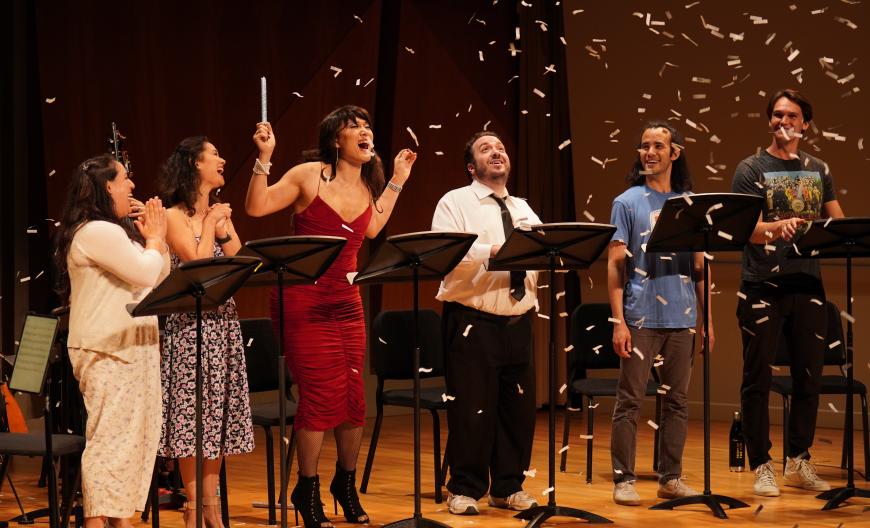
Her bio says she’s a musician because “I’m a beauty junkie, a transcendence chaser, and someone who needs to commune.” She is violinist Maia Jasper White, executive director and co-artistic director, with violinist Kevin Kumar, of Salastina. Founded in 2010, the chamber music organization has been on a musical tear ever since — and even more so since COVID, with White pointing out that Salastina’s audience has grown a whopping 272 percent compared to pre-pandemic levels.
Indeed, with five live performances left in its 2023–2024 season, including its Happy Hour No. 121: “Sounds Mysterious” on April 14 at Barrett Hall at the Pasadena Conservatory of Music and “The Universe Sounds Delicious” on April 28 at The Revery, Salastina is decidedly on a roll.
The organization’s Happy Hours began during the pandemic as a virtual series that offered live musical performances, conversations, and interaction with music lovers all over the world, White said. “That series provided a really needed and wonderful, organic marketing boost. Because the ability to engage artists that would normally have been out of our reach [was possible] — they were not busy, musicians like Hilary Hahn and Chris Thile — when we asked them to do these things, they said yes.”
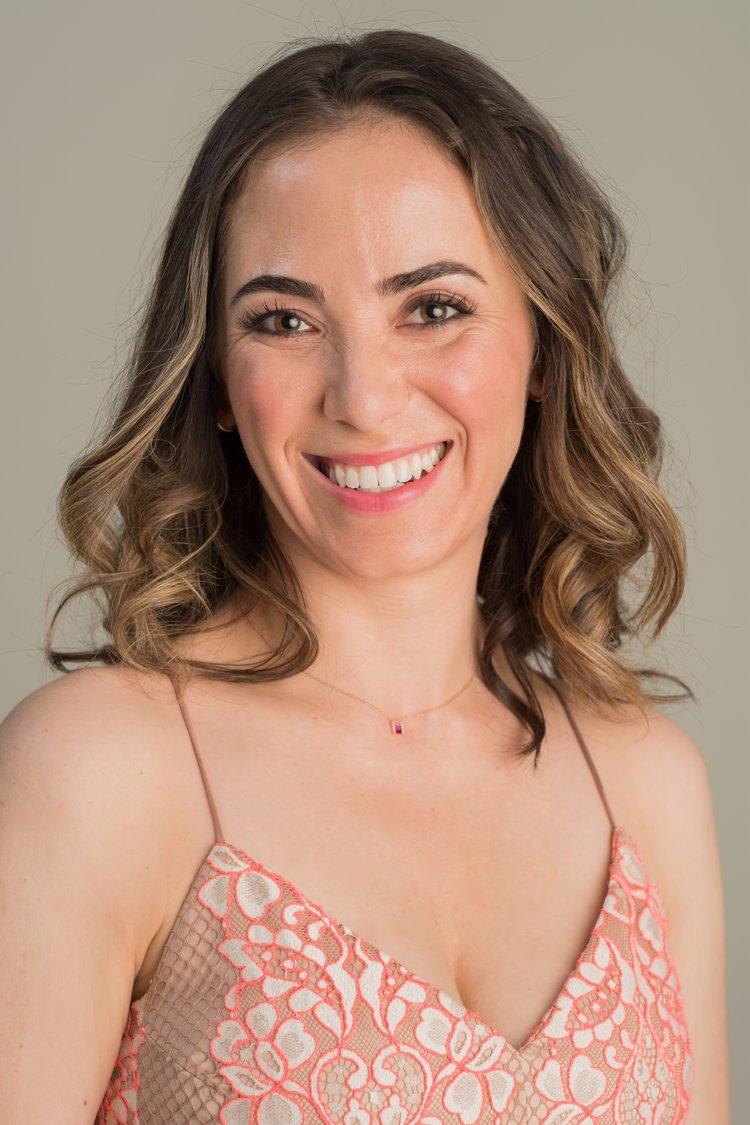
White, who graduated from Yale and earned a master’s degree from USC, subsequently meeting Kumar in Santa Barbara while they were both playing in an orchestra, recalled, “When the pandemic ended and we saw that our virtual weekly events weren’t bringing in as many viewers, we pivoted to what it is today — our live, in-person events that are more casual. They’re also livestreamed.
“That is crucial,” she added. “We didn’t want to lose all the people around the country, especially those giving money. The benefit was that they could watch the series for free. The statistic I’m proudest of is that while most peer organizations are still struggling to bring audiences back to size, we’re harnessing [our] marketing power and earning people’s loyalty and trust. And we were able to run with that.”
With its current annual concert budget under half a million dollars, Salastina also has two other areas of programming, White said. One is Vital Sounds, which consists of virtual performances that are given three times a week by Salastina musicians, young artists, and guest artists specifically for patients, their families, and medical staff in UCLA’s intensive care unit. To date, Salastina musicians have provided over 50,958 minutes of one-on-one music to over 2,568 patients and their caregivers, and according to White, the program is expanding to Huntington Health this year.
“The program is a significant investment, but it helps us with earning trust with the community. It’s the empathetic thing to do, and people donate because they’re moved by Vital Sounds.”
The other platform is Sounds Promising, an apprenticeship program committed to the professional development of young musicians and composers age 18 to 30. “One of our standout participants,” said White, “is Kian Ravaei. It’s not lost on him that his string quartet for us, Family Photos [2021], and that experience had a profound impact on his prospects as a composer.”
White continued, “We select one [composer] from each cohort [to commission], putting our money where our mouth is. It’s zero cost [for the Sounds Promising participants] from start to finish, but by actually commissioning [a work], we’re nurturing young colleagues. We’re building a community, and as an organization, we [want] what we do as a community [to be] inclusive of musicians, composers, and audiences.”
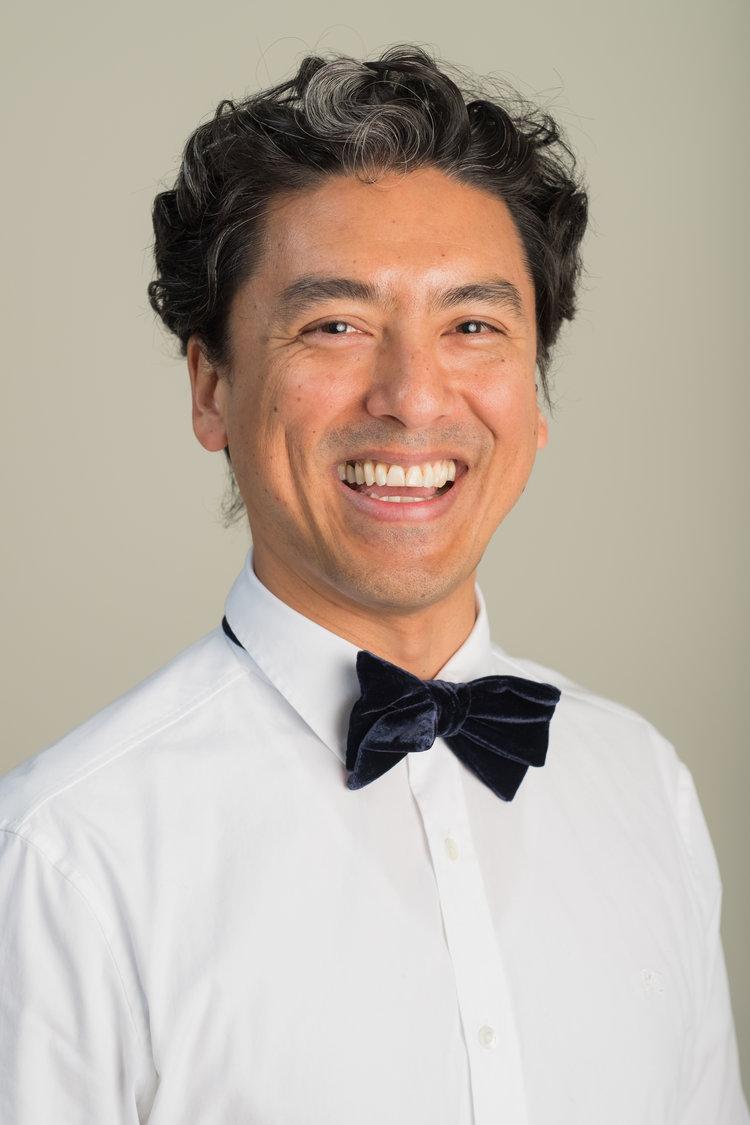
Kumar, a Stanford alumnus who, like White, is also a studio musician, attributes much of Salastina’s successful evolution to building a community. “The driving force behind Salastina is approaching the concert experience with the intention of forming genuine human connections. So when you come to a concert, you’re just as likely to be greeted by one of the performers as you are by an usher.
“We do that,” continued Kumar, “because when you introduce yourself to somebody or speak to somebody, that’s the first step in forming a connection. That changes our music-making. We’re no longer the artist presenting something; it’s more like we’re sharing something with people we’ve met. We’ve gotten better and better at that, [and] that changes how people feel about classical music, how the artist feels about what they do.
“It’s no longer a performance,” stressed Kumar, “but it’s more like a conversation with the audience. We try to make people feel at home, and that broadens the appeal of classical music as well.”
Added White: “Our field has paid a lot of lip service to audience engagement, but we actually do it. Before I’m performing, I’m out talking to audience members. That’s been our secret sauce — inviting them to unmute, engaging them with the chat. We talk to them before, during, and after a performance. When Brian Lauritzen is hosting, sometimes he’ll ask questions, and people can blurt out their answers.”
For those unfamiliar with the name, Lauritzen is a well-known voice in Southern California. A host of several KUSC radio programs, he also gives preconcert talks for, among others, the Los Angeles Philharmonic, Los Angeles Opera, and The Wallis. In addition, he’s one of Salastina’s six resident artists, along with violist Meredith Crawford, cellist Yoshika Masuda, pianist HyeJin Kim, flutist Benjamin Smolen, and composer Derrick Skye. (You can find some of their individual recordings for sale on Salastina’s website.)
Having been with Salastina since its 2012–2013 season, Lauritzen is once again hosting the ensemble’s upcoming Happy Hour concert, which features a piano quintet. Subtitled “Sounds Mysterious,” a concept Salastina has used before, the concert consists of Lauritzen assigning the performers a piece of music that none of the players recognize, with the host having redacted the composer’s name. The group rehearses the piece, performs it, and then attempts to guess the composer along with the audience.
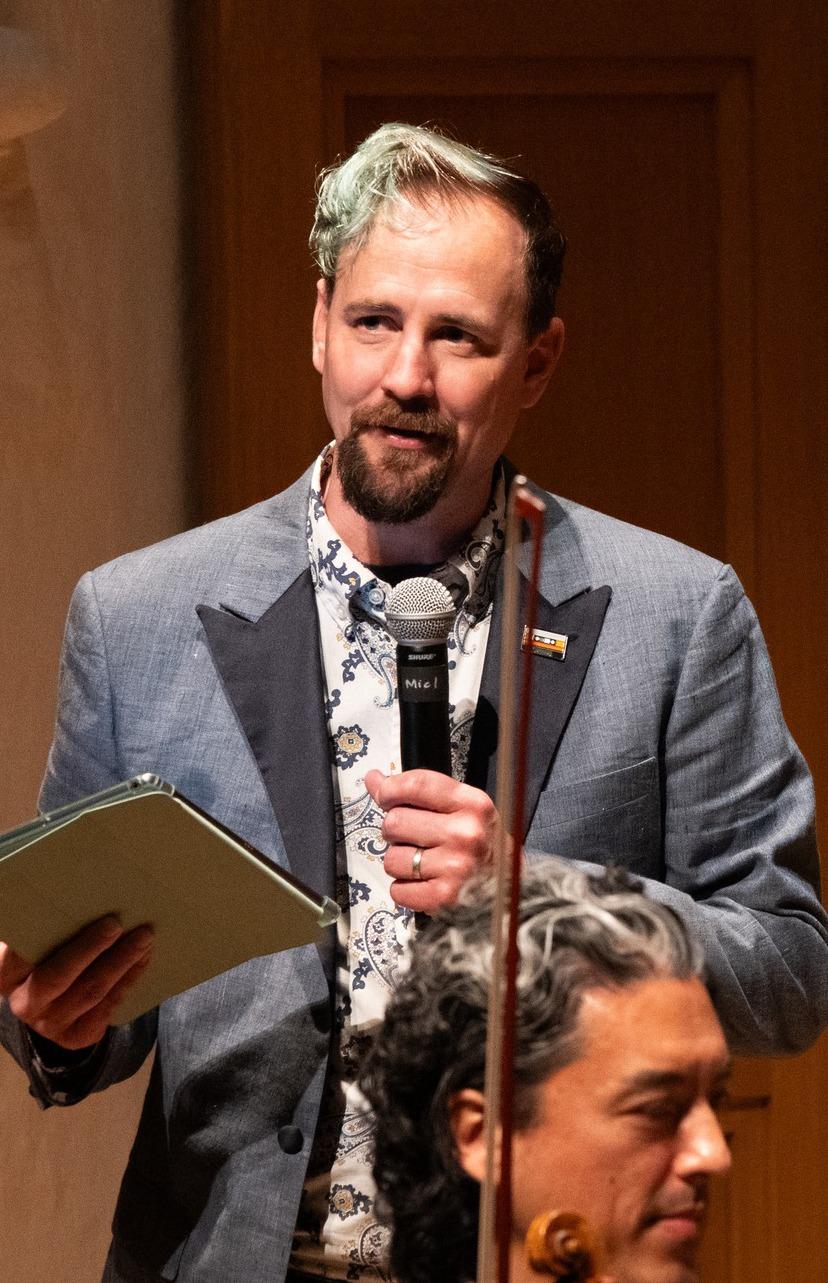
“When we would program our seasons,” explained Lauritzen,” we kept asking ourselves questions [such as], ‘Why are certain chamber music pieces at a pinnacle and others are almost rarely or never performed?’ The answer kept coming back that works [are rarely performed] not because they’re bad pieces of music but because of historical reasons, [such as being written by a composer from] an underrepresented group who had faced adversity because of a racial background or because of gender or cultural heritage.
“So we asked ourselves, ‘What could we do to spotlight not just them as composers but spotlight the fact that music is not something that we can always judge within a context?’” Lauritzen continued. “‘What if we removed the context and just played a piece of music, and you could evaluate it, not knowing who wrote it, what country it’s from, what time period? What if we just took music in its purest form and put it out there? We’re going to play this, not tell you what it is, and afterward, have a conversation about it. Then, [if nobody guesses correctly], we’ll reveal who the composer is and tell a story about them.’”
Last August, the “Sounds Mysterious” composer, George Onslow (1784–1853), actually stumped both the performers and the audience. Recalled Lauritzen: “Here’s an unknown composer who wrote more than 30 string quartets. I had known about him because there are a few recordings of his music. His musical aesthetic is similar to what a lot of classical music radio stations like to play.
“It’s wonderful music,” added Lauritzen, “but no one’s going to come up with that name. That’s part of the intrigue, too. Audience members will say, ‘We heard a really cool piece of music. How come I don’t know who this composer is?’”
White recalled that audience members at that August concert thought the ensemble was “faking it. They put us on pedestals, and there are expectations. The whole point is sometimes it’s impossible to guess the composer because there’s this Mount Everest of repertory, and the single most inspiring thing about the art form is that this vast Everest of music is unknowable: the arbitrariness of fame, who earns posterity, social justice topics du jour. That also holds true for George Onslow. We’re not afraid to humble ourselves publicly. That endears us to the audience and puts us on the same intellectual plane.”
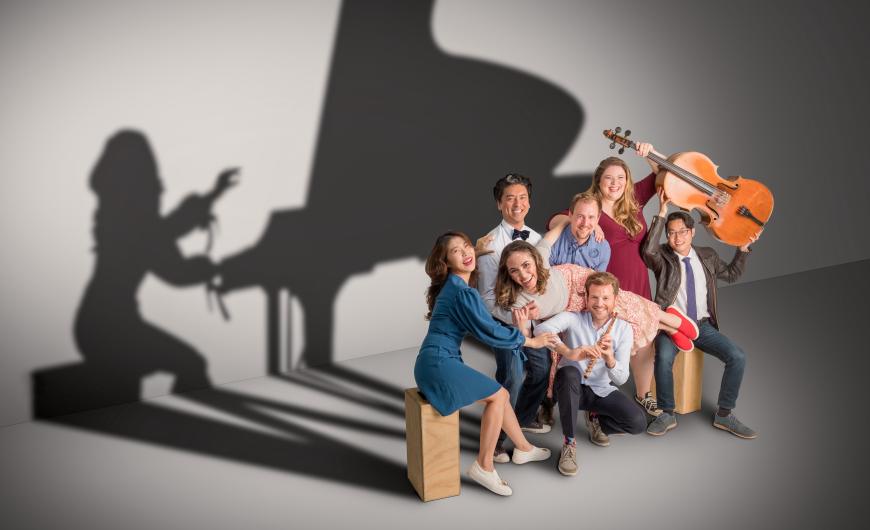
Another way Salastina, which also has a membership program, engages with audiences is by presenting food-centric concerts. Last December, the organization had a Christmas brunch at the Doheny Mansion at Mount St. Mary’s University. This month, Salastina will be at The Revery in downtown L.A., performing a space-themed program dubbed “The Universe Sounds Delicious,” with master chef Becky Brown serving a gourmet five-course meal between pieces.
When she did a site visit to The Revery, White was wowed, and because she’s also director of chamber music at Caltech, she made a sci-fi connection. “It looks like a set from Star Wars,” she said about the downtown venue. “And since I know a lot of interesting musicians and scientists, I’m bringing three of them that night. I’ve noticed that in my time at Caltech — especially the grad students studying astronomy, physics, aeronautical engineering — they also enjoy music.”
Selections for the April 28 program include Terry Riley’s Sunrise of the Planetary Dream Collector and music from Hans Zimmer’s score for Interstellar and John Williams’s score for Star Wars. In addition, astronomer Steve Bryson will be speaking, as well as playing the theremin in Carolina Eyck’s Ascent-Descent and Strange Birds.
“He’s a mathematician at NASA,” said White, “and a master theremin player. He had never performed on a professional concert until 2021.”
And while the chamber music scene in Southern California is robust, Lauritzen said that what makes Salastina special is that “first and foremost, it starts with great music-making. From there,” he continued, “it’s a relational performing arts organization — one that deeply cares about its audience [and] one that spends the time and effort to develop deep and lasting relationships. The audience knows they care about them. That’s something you don’t see in the performing arts world that often.”
Another key ingredient, according to Lauritzen, is the idea that, in addition to giving first-class chamber music performances, “Kevin and Maia want to make it fun. Classical music should be fun. We have a great time, and that makes the Salastina difference. I wish more people would do this.”
With the organization well into its second decade, the co-founders are thinking ahead and agree that they would like Salastina to have a dedicated space. “I want to continue doing what we’re doing but on a bigger scale,” said Kumar, “and one of our dreams is to have our own venue. While I think that we will be able to sell out bigger halls, we don’t want to sacrifice the intimacy and the connection that we have with people with a smaller audience.”
White said she’s not sure how Salastina will get its own venue, but “I’m inspired to make that happen. Peer organizations with similar budgets have made a go of that, so that’s an area of focus for us. All the things we do are pointing toward deeper roots and more expansive flowering of branches. It’s been a long road to get to this place, and Kevin,” White exclaimed with a laugh, “has the gray hair to show for himself.”


